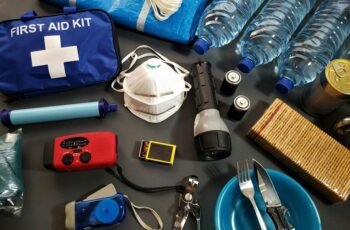You’re facing a new reality: LiFePO4 batteries don’t behave like NMC or NCA, so you can’t treat their end‑of‑life the same way. Lower fire risk helps, but low cobalt value shifts how you design logistics, diagnostics, and recovery. Direct cathode regeneration looks promising; hydrometallurgy still matters; pyrometallurgy less so. The economics hinge on scale, policy clarity, and second‑life options. If you want a circular system that actually pays, here’s what you’ll need next…
Why Lifepo4 Recycling Differs From Other EV Chemistries
Although all EV batteries end up in a recycler’s queue, LiFePO4 (LFP) packs change the economics and process. You face lower cobalt and nickel content, so traditional revenue from recovered metals shrinks. That shifts you toward volume efficiency, low-cost logistics, and alternative value streams like cathode-grade iron phosphate reuse. In Lithium ion comparisons, LFP’s stable olivine structure reduces fire risk, letting you simplify thermal safeguards and processing steps. Lifepo4 advantages include flat voltage and long cycle life, which means packs arrive with more usable capacity for second-life uses, delaying shredding.
You’ll also manage higher pack mass per kilowatt-hour and robust phosphate binders that resist acid leaching, nudging you to optimize mechanical separation and targeted hydromet routes. Overall, LFP recycling prioritizes safety, throughput, and material circularity over metal margins.
The End‑of‑Life Journey: Collection, Disassembly, and Diagnostics
Before an LFP pack ever meets a shredder, its end‑of‑life path starts with controlled collection, safe de‑energizing, and triage. You log chain‑of‑custody, verify chemistry, and isolate damaged units. Robust collection processes minimize transport risks: use UN‑rated containers, short circuits prevented by insulating terminals, and real‑time temperature monitoring. On arrival, you depower to manufacturer specs, confirm zero volts at the pack bus, and tag high‑voltage hazards.
Next, you apply modular disassembly techniques. You remove covers with insulated tools, disconnect service plugs, and separate modules, BMS boards, and busbars. You catalog serials and state of health. Non‑destructive diagnostics—impedance checks, OCV curves, and IR thermography—identify reuse candidates and quarantine outliers. Finally, you sort components for repair, second‑life testing, or materials recovery pathways.
Recycling Methods: Direct Cathode Regeneration, Hydrometallurgy, and Pyrometallurgy
With packs triaged and modules sorted, the real value recovery starts with how you process the active materials. You’ve got three main routes. Direct cathode regeneration keeps crystals intact, restoring LiFePO4’s structure with relithiation and annealing. It avoids breaking everything down, preserves morphology, and boosts recycling efficiency when feedstock is clean and well‑characterized.
When you need broader recovery, hydrometallurgy techniques dissolve the black mass with selective leaching, purification, and precipitation. You can tune reagents to separate iron, phosphorus, and lithium, and produce battery‑grade salts ready for new cathode synthesis.
Thermal paths bring pyrometallurgy advantages: robust throughput, tolerance to mixed chemistries, and efficient carbon removal. You smelt, then refine slags and metal phases. It’s scalable, but you’ll pair it with downstream hydromet steps for specification control.
Economics and Environmental Impacts Across the Value Chain
Even as the chemistry stays stable, LiFePO4 recycling economics hinge on scale, feedstock quality, and commodity cycles. You’ll control margins by optimizing logistics, pre-processing yields, and energy intensity. Do a cost analysis that separates collection, sorting, mechanical liberation, and chemical refining; LFP’s lower metal value makes throughput and uptime decisive. Track sustainability metrics alongside cash flow—carbon intensity per kWh recovered, water use, and waste diversion.
| Factor | Impact |
|---|---|
| Scale | Low unit costs via continuous throughput |
| Feedstock purity | Higher yields, fewer reagent losses |
| Energy source | Cleaner power cuts emissions and OPEX |
| Residue handling | Better valorization reduces disposal fees |
Design around pack formats to limit manual labor. Recover iron phosphate, graphite, copper, and aluminum efficiently. Monetize by-products, lock transport routes, and instrument plants for real-time yield and emissions data.
Policy, Standards, and What’s Needed to Scale Closed‑Loop Systems
Although technology sets the ceiling, policy and standards determine how fast LiFePO4 closed‑loop systems scale. You need clear policy frameworks that align incentives from design to second life and end‑of‑life. Mandate design-for-recycling, traceability, and minimum recycled content. Standardize pack labeling, data formats, and safe handling so dismantlers and recyclers work faster and safer. Prioritize regulatory compliance with harmonized rules across borders to cut friction, then back it with enforcement and transparent reporting. Finally, de‑risk capital with credits, contracts-for-difference, and public procurement favoring recycled materials.
- Set uniform state and national policy frameworks with measurable targets
- Require digital passports for batteries to streamline regulatory compliance
- Adopt interoperable safety, transport, and testing standards
- Tie producer responsibility to real recycling rate outcomes
- Fund pilots that prove closed‑loop economics at commercial scale
Conclusion
You’ve seen how LFP’s stability reshapes end‑of‑life strategies, from safer collection to high‑yield recovery. Lean into direct cathode regeneration and smart hydrometallurgy to cut costs and emissions while keeping materials in loop. Here’s a hook: recycling can slash battery CO2 footprints by up to 70% versus virgin sourcing, and LFP’s lower fire risk speeds throughput. Push for unified standards, transparent diagnostics, and take‑back policies so you can scale closed‑loop systems—and turn end‑of‑life into lasting value.

